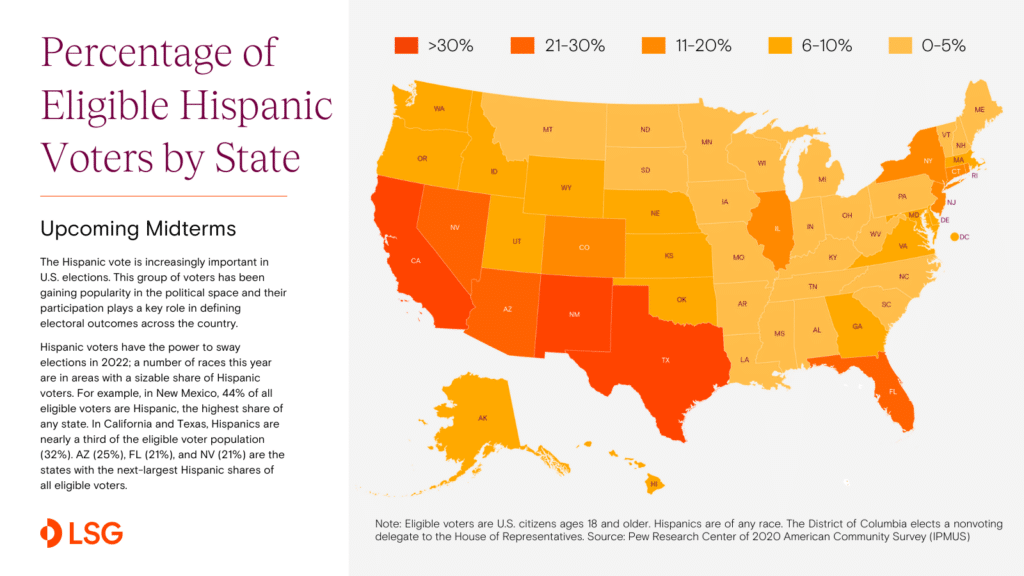November 7, 2022
The Hispanic vote is increasingly important in U.S. elections. This group of voters has been gaining popularity in the political space and their participation plays a key role in defining electoral outcomes across the country. This segment of the electorate was already decisive in 2018 and 2020, and their turnout is expected to have a big influence on several results in the upcoming midterm elections in 2022. Here are 5 key facts to understand the Hispanic vote ahead of the upcoming November 8, 2022 midterm election
1. Hispanics already determine key races and will do so again in 2022. The 2020 census showed that 62 million Hispanics live in the United States and the number of Hispanic-eligible voters in these midterms is 34.5 million. This makes it the fastest-growing group in the U.S. electorate since the last midterms. Their electoral strength is increasingly important and transcends states that have traditionally had a higher proportion of Hispanic voters. Their mobilization and support for different candidates will decide elections across the country.
2. The Hispanic vote is more closely contested than ever. To obtain results like those predicted by the polls among Hispanic voters, we would have to go back to President George W. Bush’s term. Democrats face uncertainty in key congressional seats by the rightward shift predicted by many Hispanic polls. The Hispanic vote is not owned by either party and in this election, it is being really courted by Republicans, who hope to gain key strategic victories with the support of Hispanic voters.
3. It is important to understand what motivates Hispanics to vote. The top priorities for Hispanic voters do not vary much compared to the average voter, whether Republican or Democrat. In the case of the Republican Hispanic registered voter, in order of priority, the issues that influence them most when deciding their vote are the economy and inflation, followed by crime and gun violence, and education. In contrast, the Latino Democratic voter focuses on health care, the economy and inflation, and education as priority issues when choosing their leaders.
4. Hispanic turnout rate is increasing, which is key to determining their political power. One of the issues that has determined the influence of the Hispanic vote in elections is its low turnout rate compared to other groups. Recent elections have seen record turnout among Hispanic voters, and that trend is expected to grow in this year’s midterm. Greater mobilization undoubtedly leads to greater electoral clout. The Hispanic community can no longer be considered a “sleeping giant.”
5. Hispanic voters are a diverse electorate that behaves differently across the country. Hispanic voters are probably one of the most heterogeneous groups in the country. This election will reveal distinct regional and state trends among the increasingly important Hispanic vote. Both parties and analysts should take note of these trends to better understand the behavior of this growing group of voters.
Hispanic voters are becoming more numerous, more diverse, more relevant, and, ultimately, more decisive. Their vote, which is increasingly courted, will be one of the deciding factors in many of the electoral races in the country this year, and in elections to come. Understanding the Hispanic voters, and listening to their concerns, is key to any analysis of U.S. politics. This group was, is, and will be a crucial part of the social, economic, and political fabric of the United States.

